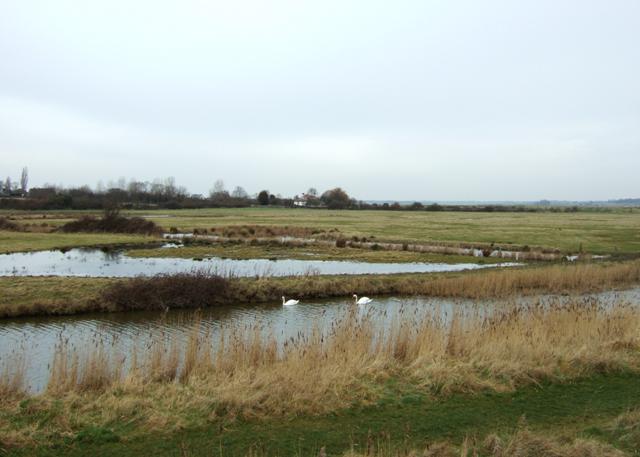
The Environment Agency is supporting a new trading scheme that will pay farmers to convert their land into a threatened coastal habitat.
Use of conservation credits in the UK has come a step closer, with the Environment Agency entering into an agreement with the Environment Bank, a small company set up to promote the concept four years ago.
The idea is that developers whose projects damage wildlife habitats agree to pay money, or credits, into a central fund or ‘biobank’. The amount is determined by how much natural habitat is lost and how important it is judged to be. The credits would then be used to finance habitat restoration and creation elsewhere.
The hope is that this kind of market- based scheme will conserve and enhance wildlife habitats more effectively than existing arrangements. These are based largely on voluntary efforts by NGOs, agri-environment payments to farmers and the land-use planning system.
The agency has agreed to pilot the scheme along the Suffolk and Essex coast. The credits will be used to finance “managed realignment” and the creation of new coastal habitats, particularly salt marsh and grazing marsh.
Credits would be used to compensate farmers who surrender their fields to be converted into habitat. Sea defences will be moved further inland, allowing fields and pastures to convert naturally to salt marsh as high tides invade.
To date, managed realignment has been pioneered in several small-scale schemes, mainly along England’s eroding east coast (ENDS Report 400, pp 36-39). Here, the land is slowly sinking because the UK’s landmass is tilting as the Earth’s crust slowly adjusts to the removal of massive ice sheets following the end of the last ice age. Sea level rise caused by global warming adds to the effect.
The rising seas are gradually destroying areas of salt marsh, which are unable to retreat inland because they are backed by man-made sea walls and dykes. Salt marshes act as a natural sea defence and as higher sea levels squeeze them out of existence, the sea walls come under stronger attack.
Herein lies the case for managed realignment. The costs of maintaining man-made sea defences are drastically reduced, while a threatened habitat which acts as a natural defence is restored. The Suffolk and Essex coasts harbour large areas of the UK’s remaining salt marsh.
But the problem is persuading farmers to give up their land. Professor David Hill, chair of the Environment Bank, estimates £40,000 to £100,000 per hectare would be the kinds of funding levels required.
The agency’s involvement in this pilot biobanking scheme is critical. It has coastal defence responsibilities and draws up shoreline management plans (SMPs) with local councils, covering a 100-year period. These show where managed realignment could be a viable option.
Two SMPs cover the two counties’ coastlines. The one covering Essex and South Suffolk identifies 4,288 hectares with potential for managed realignment, equivalent to about 5% of Essex’s total farmland.
The Environment Bank will join with the agency in promoting the concept to 11 local councils with planning and coastal defence responsibilities, including Essex and Suffolk County Councils. It also wants the support of nature conservation NGOs and coastal farmers.
But the two organisations have yet to identify any development proposals that could help fund habitat restoration.
The pilot scheme has, however, obtained £175,000 funding from the Shell Foundation. This will help develop a trading system to keep track of conservation credits supplied by developers, list ‘receptor sites’ where habitat can be restored or created (such as Hamford Water, Essex, pictured) and certify when those credits are spent. This could expand to cover a much wider spectrum of habitats.
“This represents a hugely significant market-based opportunity that can be scaled up in the UK and in emerging economies,” said Shell Foundation chief executive Chris West.
The Environment Bank’s Professor Hill said: “It is still very early days, but I hope we’ll be implementing the first projects within the next two years.
“The foundation is backing us because it sees it as a good way of spreading the word on conservation credits and developing a viable financial model [for biobanking] in the next few years.”
The company has just hired Natural England’s former chief scientist Tom Tew as its chief executive. Professor Hill is Natural England’s deputy chairman.
Introducing biobanking into the UK’s highly developed planning system would be complicated. The Conservatives backed the concept in opposition, and DEFRA’s forthcoming Natural Environment White Paper will promote biodiversity offsets, but only on a voluntary basis.
Some conservationists have concerns about conservation credits, fearing the concept will make it easier for developers to damage habitat. Others support it, but think it is unlikely to work on a voluntary basis